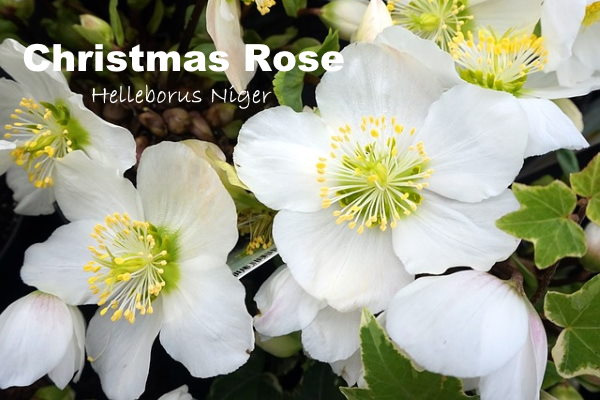White Hellebore Plant Care
White hellebore is a winter bloomer that has emerged as a popular house plant for the holiday season. Known botanically as Helleborus niger, it's often called the Christmas Rose because its showy-white blooms appear winter through spring.
Discover why this flowering beauty likes chilly temps, what makes it bloom, when to repot, how to care for it year-round, and more.
 Display this pristine, white alpine beauty where all will admire it. Image by tousaujardin
Display this pristine, white alpine beauty where all will admire it. Image by tousaujardinGet to Know White Hellebore Plant
White hellebore plant is sold by florists already in bloom before the holidays, which makes it a festive decoration. However, you'll likely see this Christmas Rose flower later in the season in subsequent years -- probably between January and April.
Flowers are held singly on upright, thick stems and open flat. Some new hybrids have a starry shape, while many have rounded petals. Thick, shiny evergreen leaves make this plant attractive year-round.
How big does it get? Most mature plants will reach a height of 1 ft (30 cm), although some hybrids grow to 2 ft (60 cm).
This beauty has origins in the mountainous regions of Europe, including Switzerland, southern Germany, Austria and northern Italy.
Green Thumb Tip
While it's tempting to put a flowering plant in a bright, sunny window, remember that this one prefers lower light levels. Place this white Alpine beauty in a cool, shaded window.
Native to mountain regions of Europe, this evergreen thrives with cool temps and low light levels. If you live in U.S. Zone 4, you can move your potted plant outdoors after blooming is over. Plant it in your shade garden with well-drained soil and you'll enjoy this perennial for many years.
Hellebores have brittle roots and don't like to be moved around. If you move it outdoors, find a spot in your shade garden or near a pathway where you'll see its enchanting flowers while the rest of the garden is still asleep.
Hellebore Problems, Solutions, and Houseplant Helps
Yellow leaves are a symptom of overwatering. Soggy soil can also lead to root rot, and fungus.
Something bugging your houseplant? Pest problems with hellebore are few, however watch for aphids that are attracted to soft, new growth. Although tiny, aphids multiply rapidly and cause a lot of damage by sucking sap from leaves and stems. Curled, distorted leaves and a sticky substance called honeydew are tell-tale signs of an infestation. Rinse off your houseplant with warm water to remove them, then spray with an insecticidal soap.
To repot...or not. Repot white hellebore when you see roots at the soil surface or coming out the drainage holes. Wait till spring to repot -- never while it's blooming. Use a pot with drainage holes to prevent soggy soil. If you like, you can cover a plain nursery pot by dropping it into a cachepot -- a decorative container without drainage holes.
Is Hellebore niger poisonous? Oh, yes. Keep your indoor plant away from young children and pets. You'll also want to wear gloves when handling it because this beautiful bloomer may cause skin irritation. The good news is that if you plant it outdoors, deer won't touch it.
 Commonly called Christmas Rose, you'll find it flowering in winter. Image by Matthias Böckel
Commonly called Christmas Rose, you'll find it flowering in winter. Image by Matthias BöckelWhite Hellebore Plant Care
Light: Put your potted hellebore plant where it will get partial or filtered sunlight. Indirect morning sun and afternoon shade will suit it fine.
Water: Keep the soil evenly moist while hellebore is growing and flowering. Water less after flowering is finished. Yellow leaves are caused by overwatering.
Humidity: Will tolerate average room (around 40% relative humidity). Homes can become extremely dry in winter; use a small cool-mist humidifier if needed.
Temperature: Cool to average 45-65°F/7-18°C
Soil: Neutral (pH 7) to alkaline (up to pH 9) potting mix
Fertilizer: Feed monthly year-round with a balanced water-soluble fertilizer.
Propagation: Divide plants in early spring, shortly after flowering is over. Handle its fragile roots with care.



